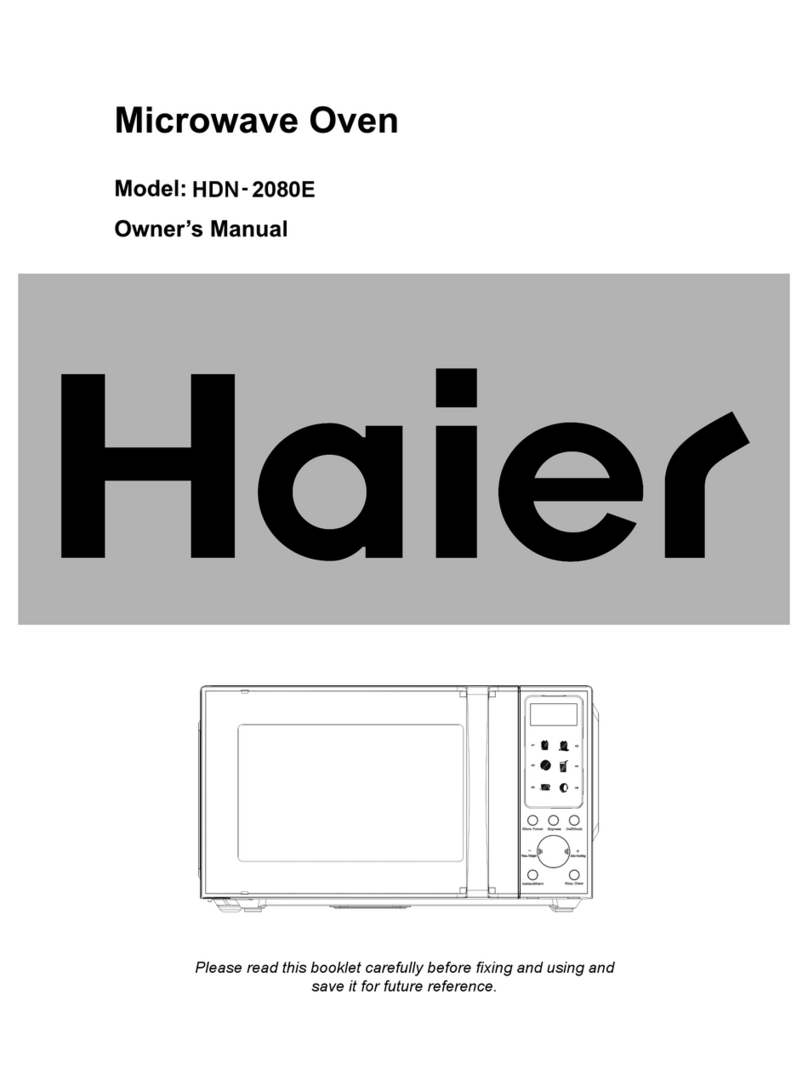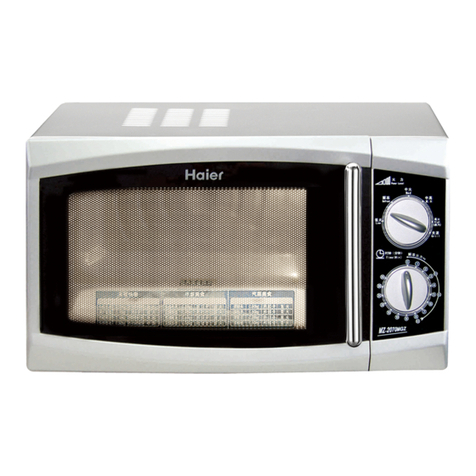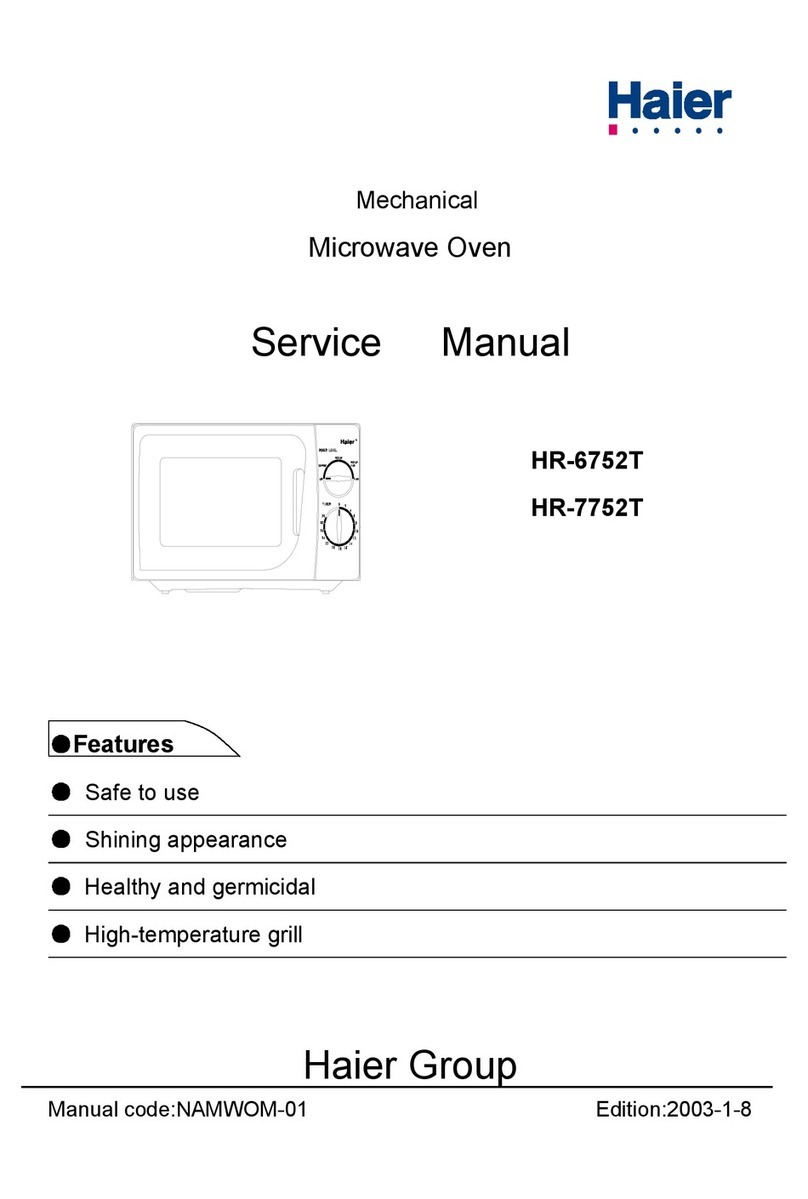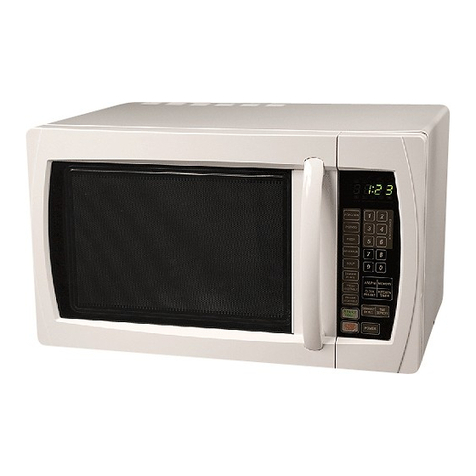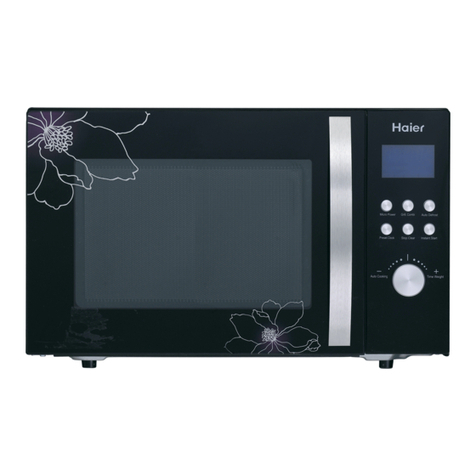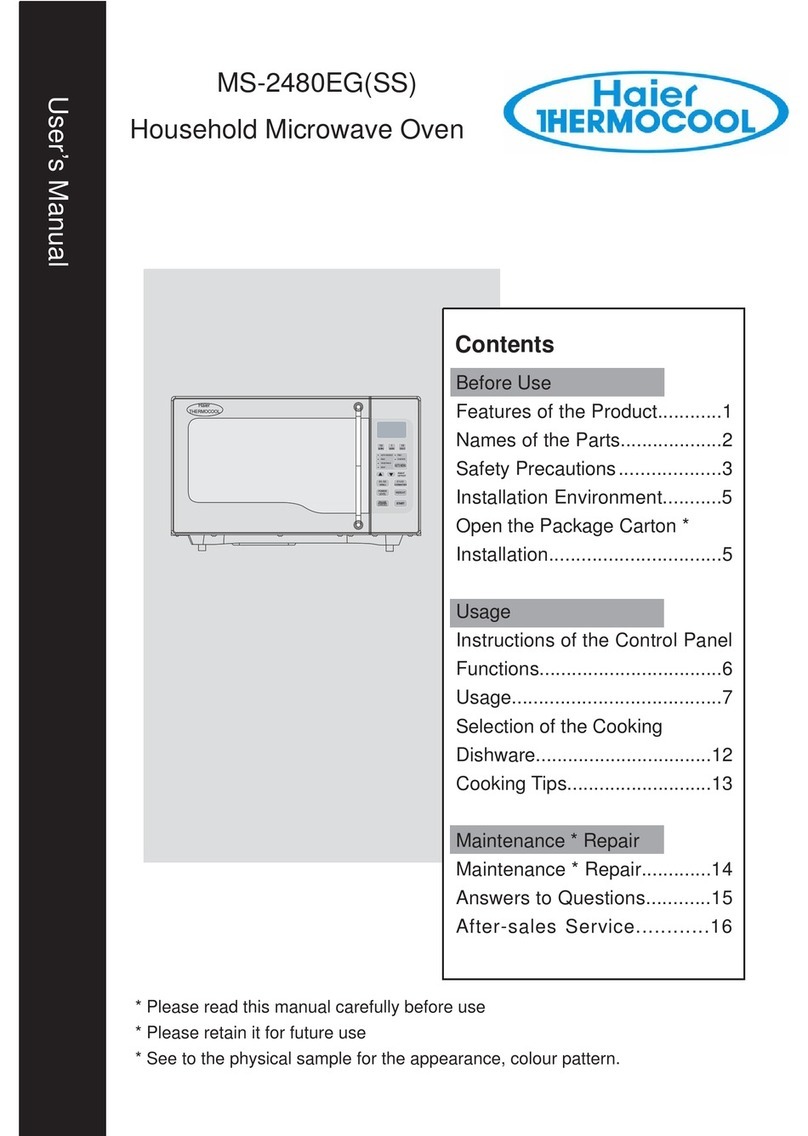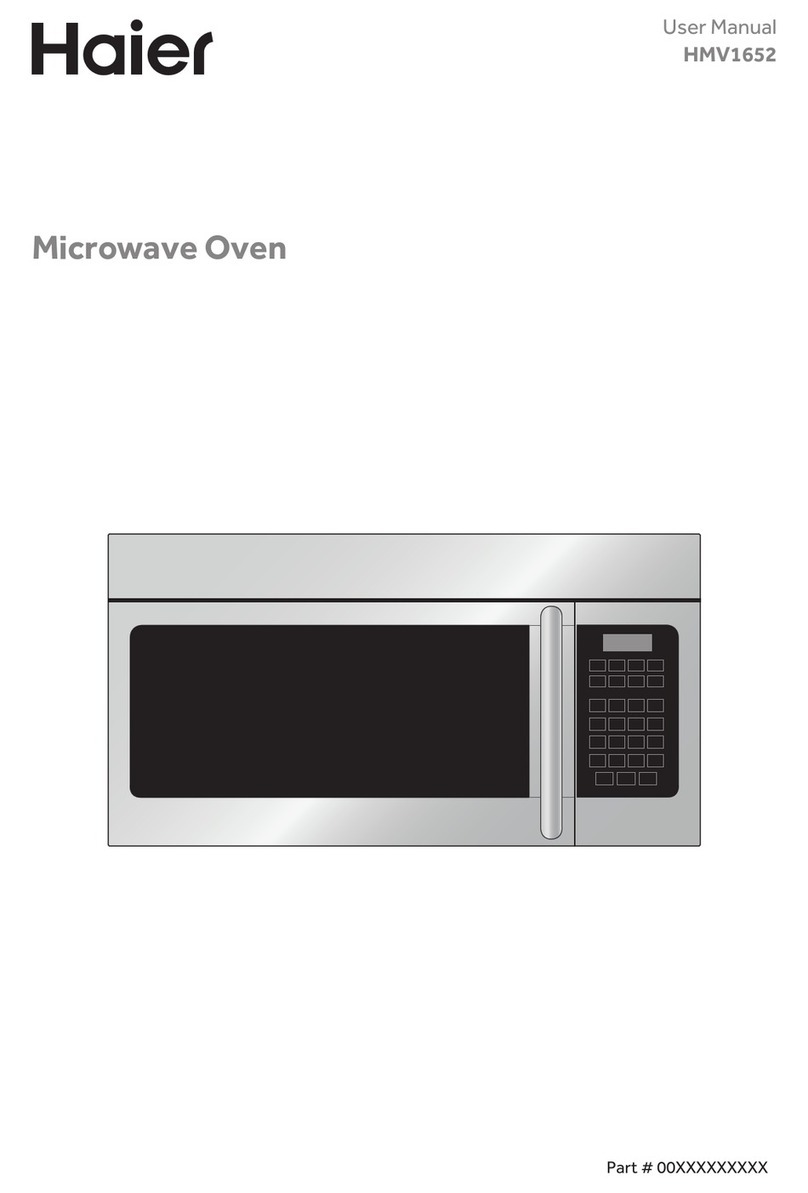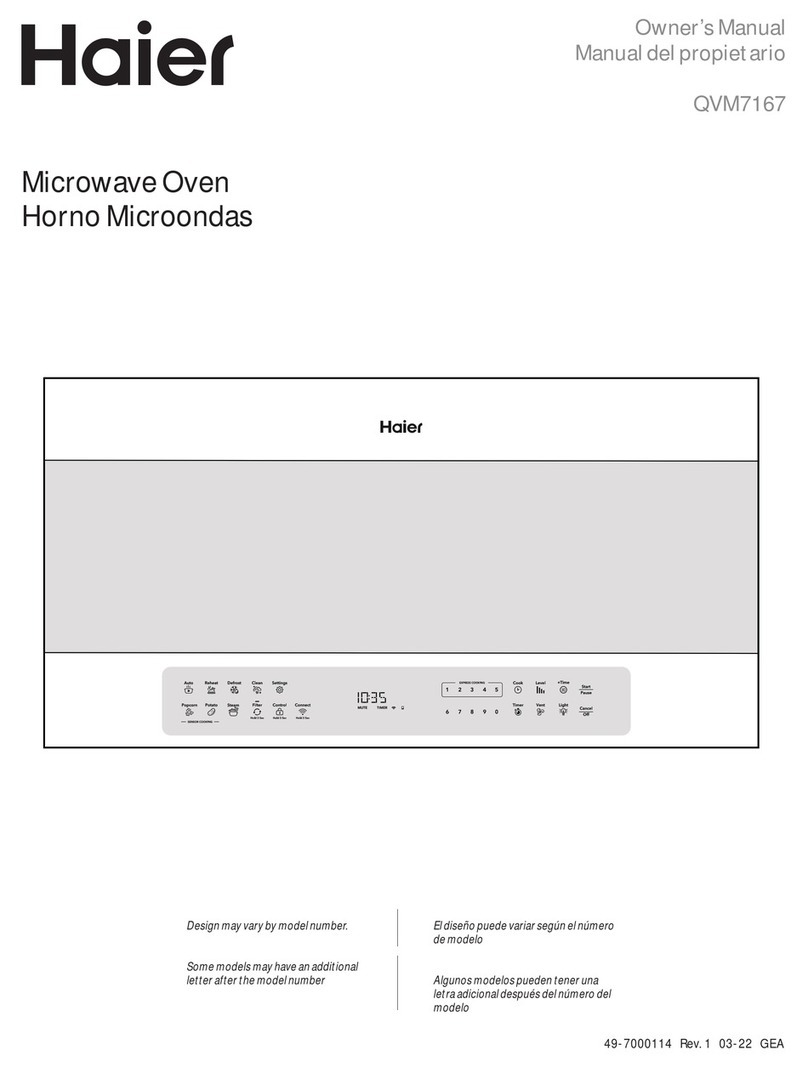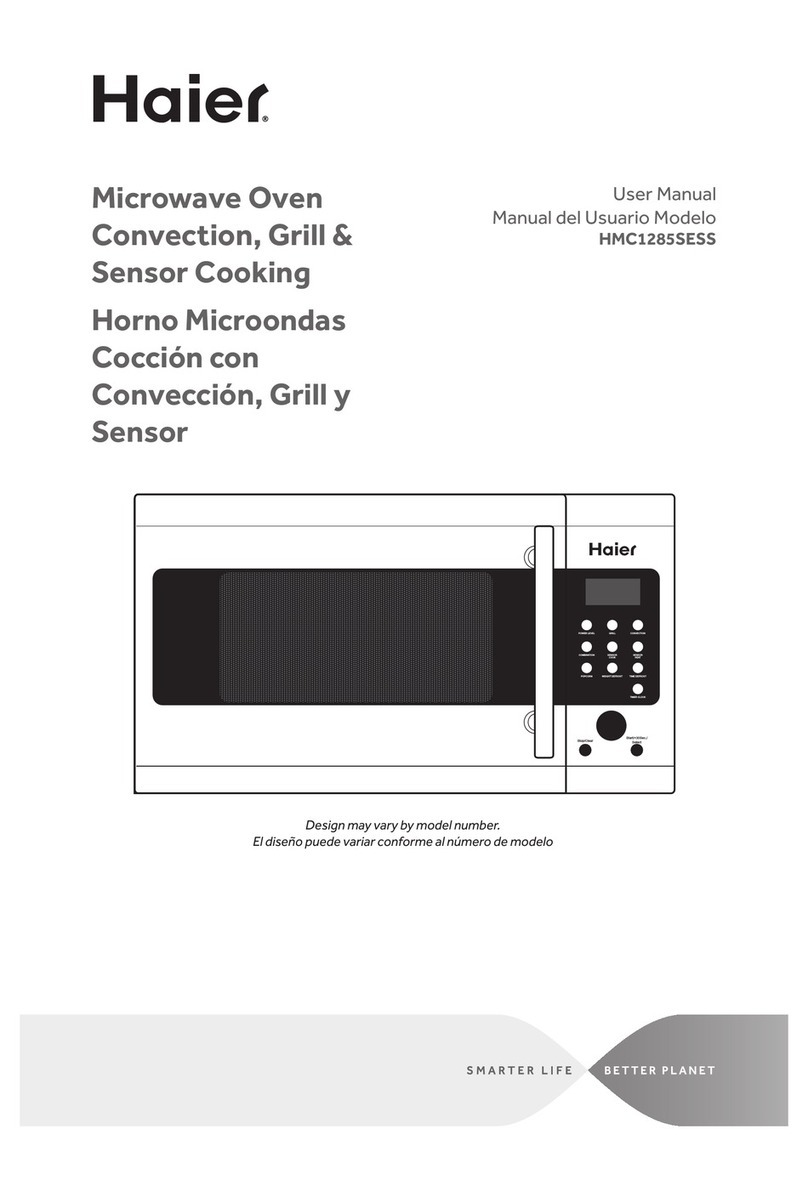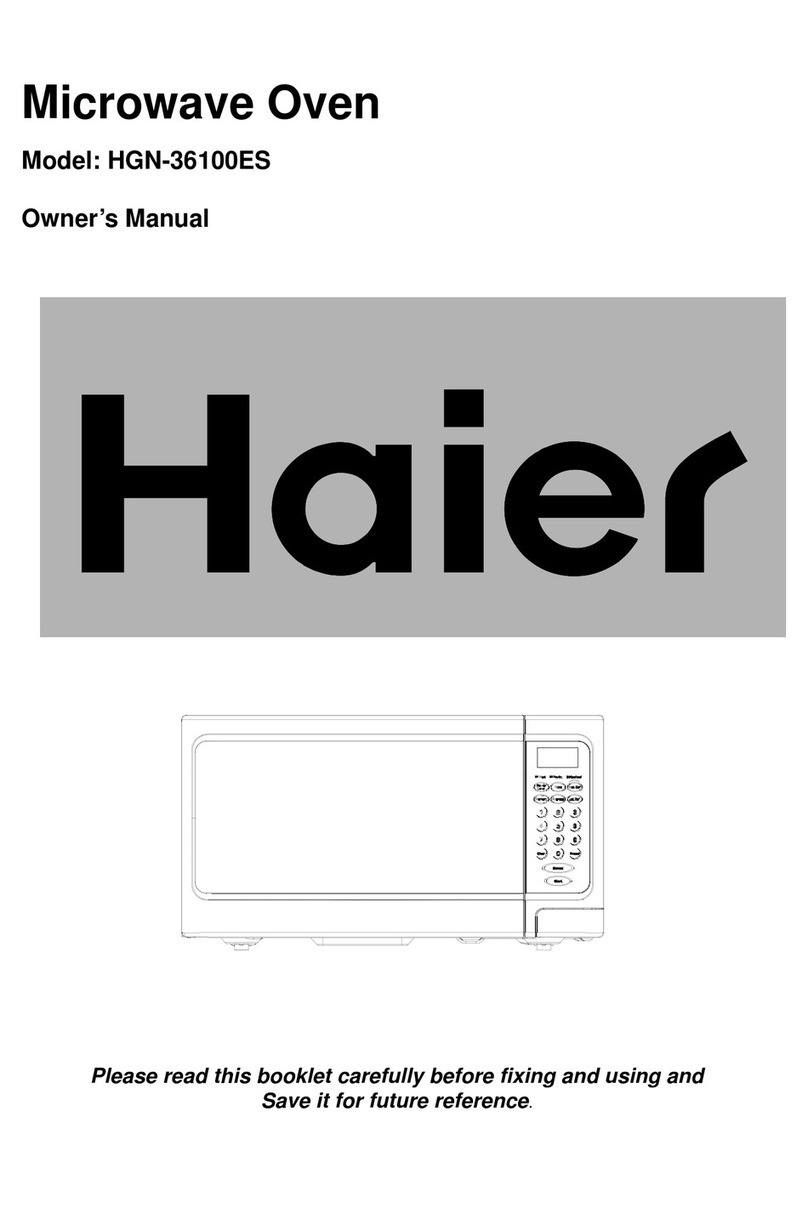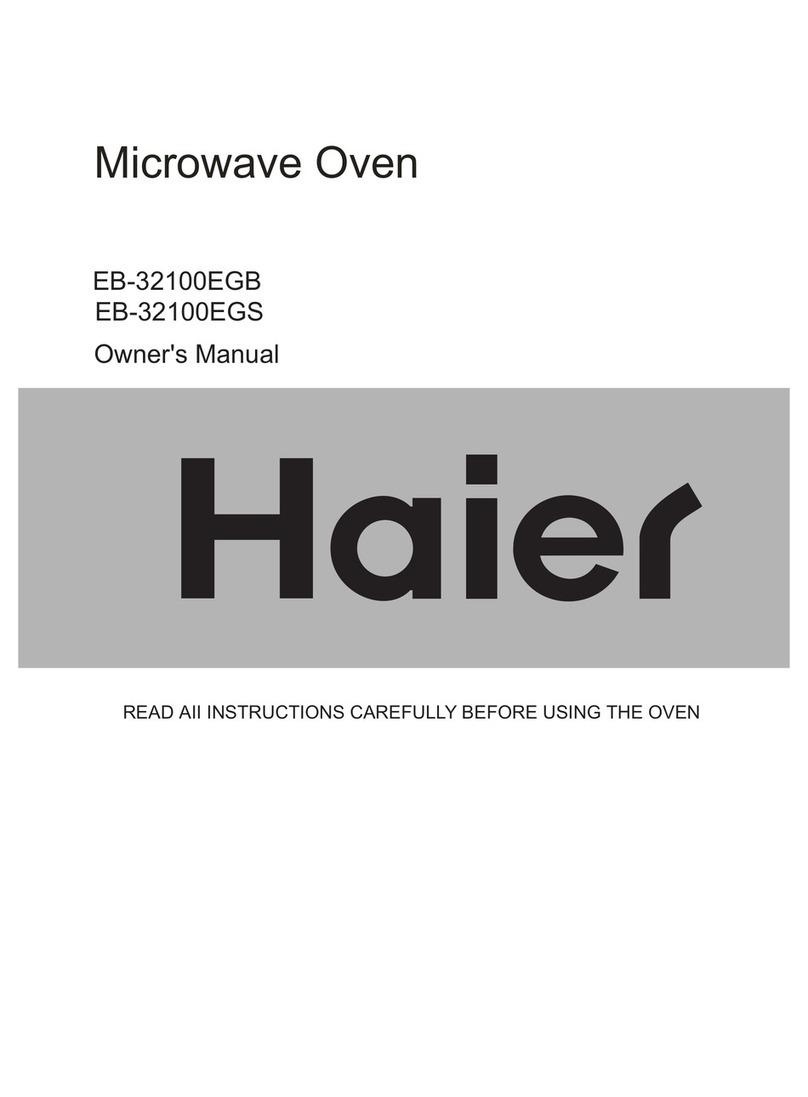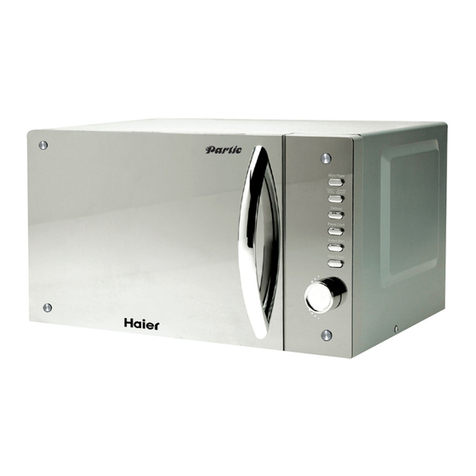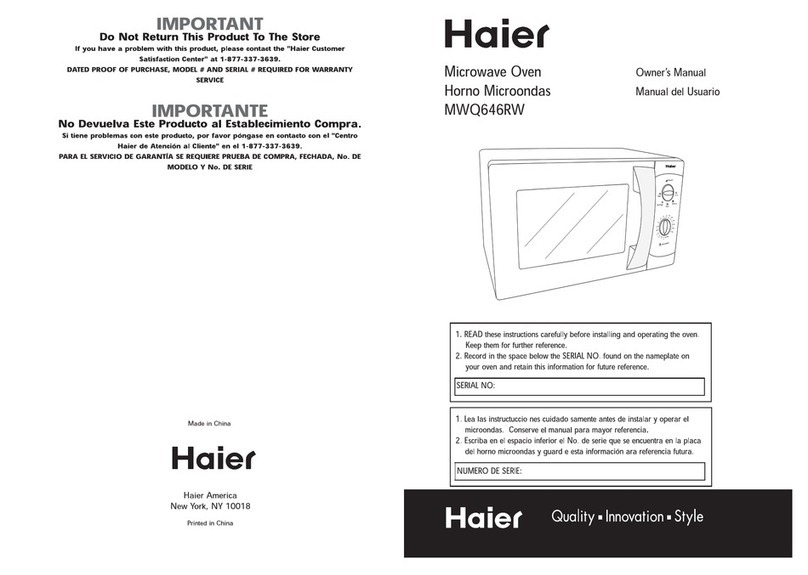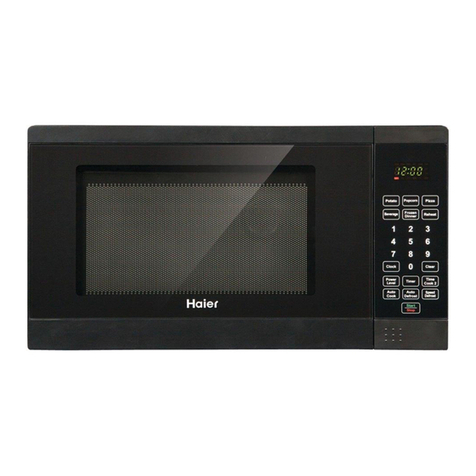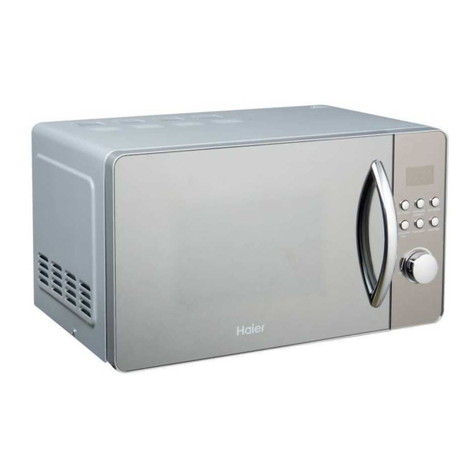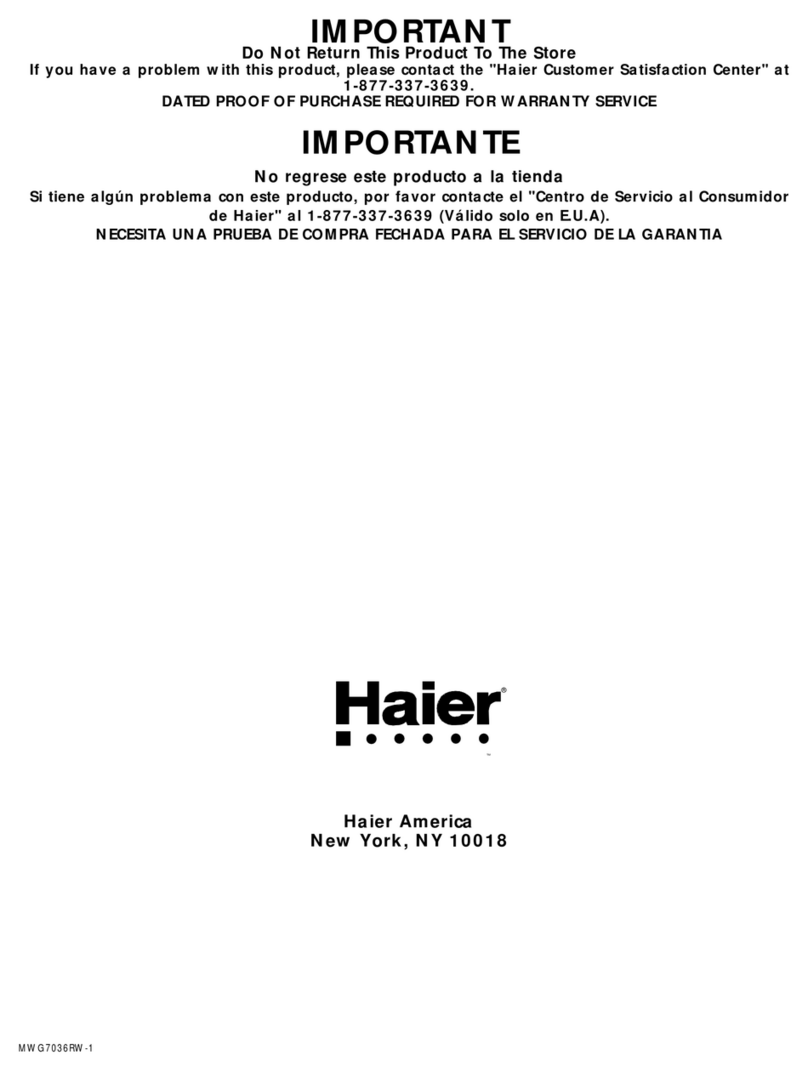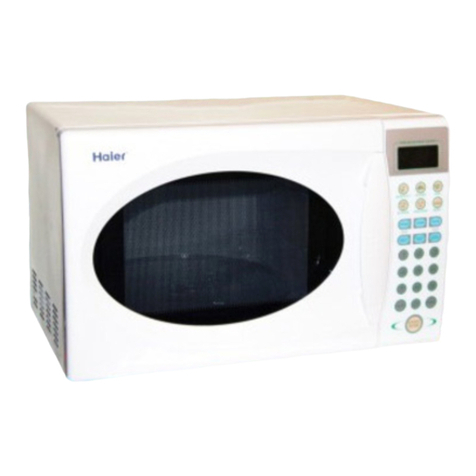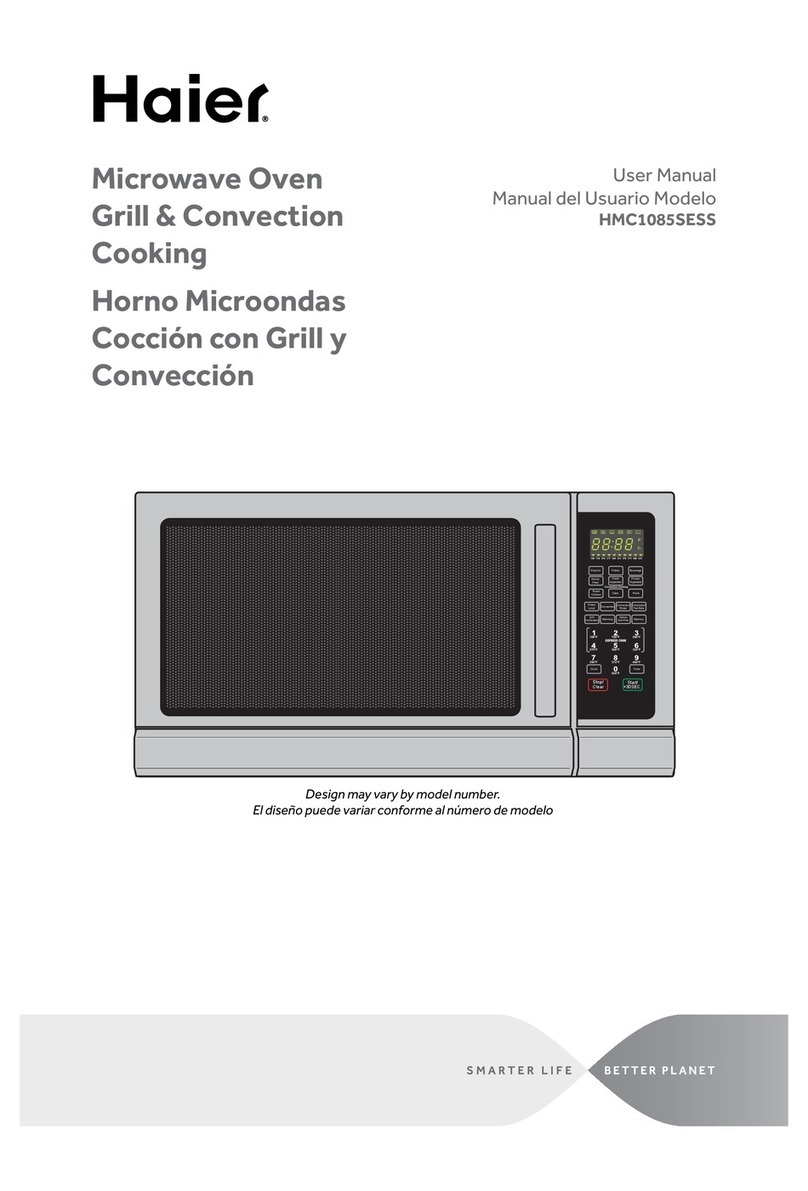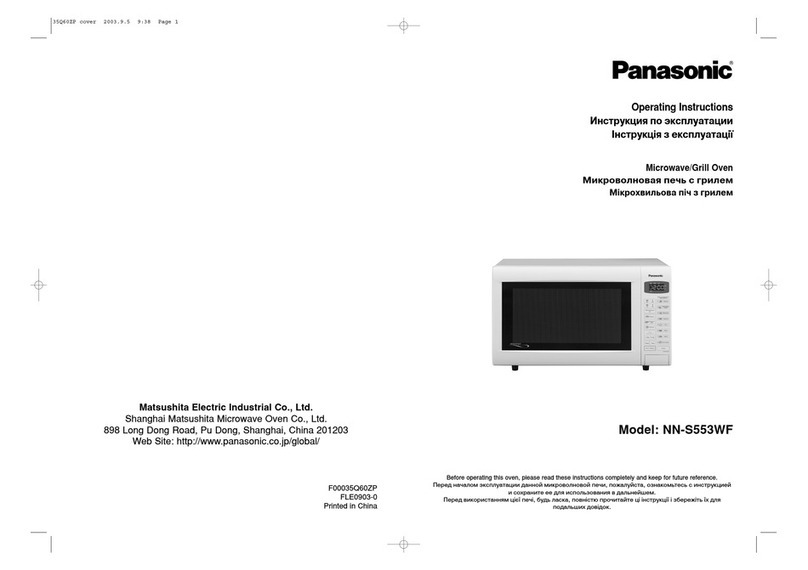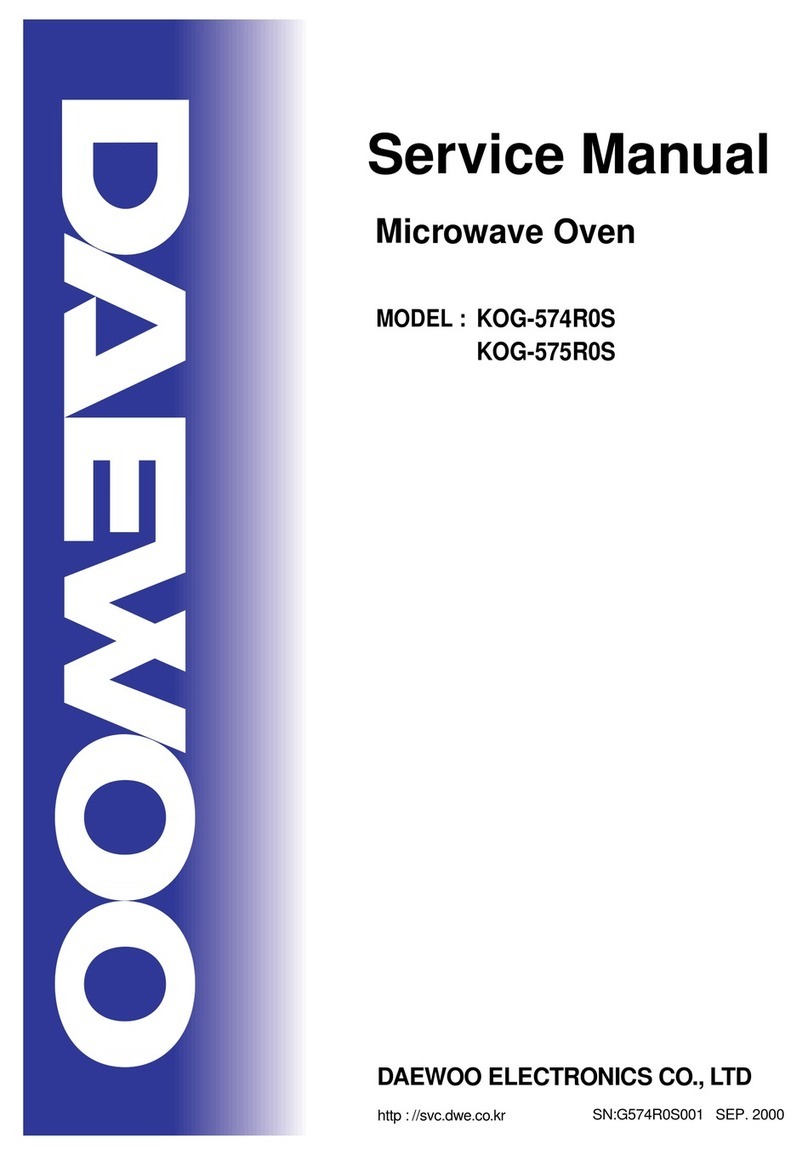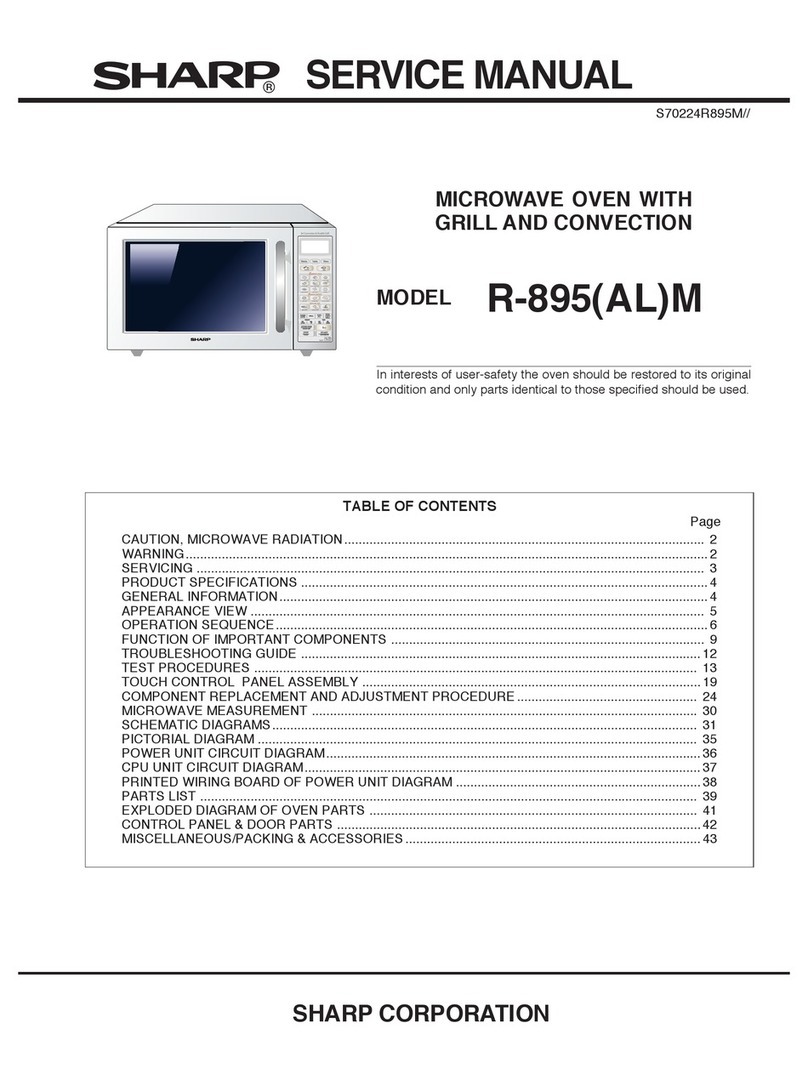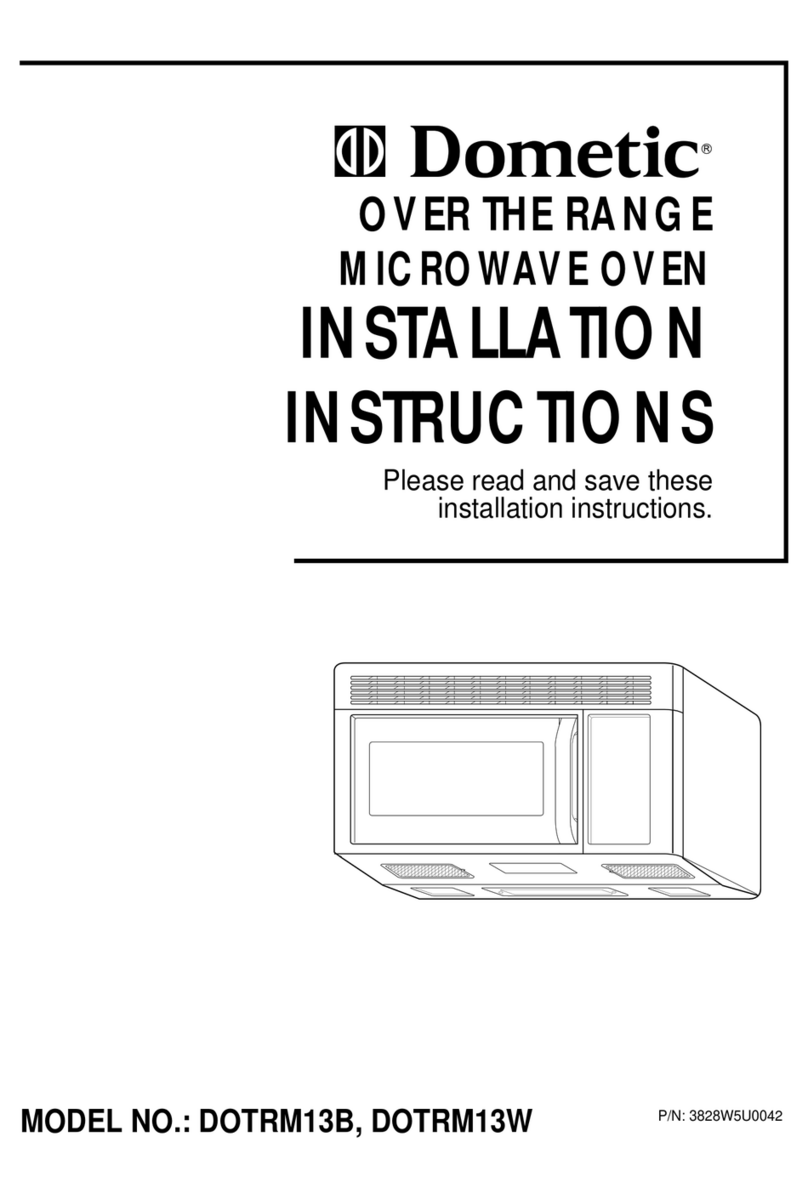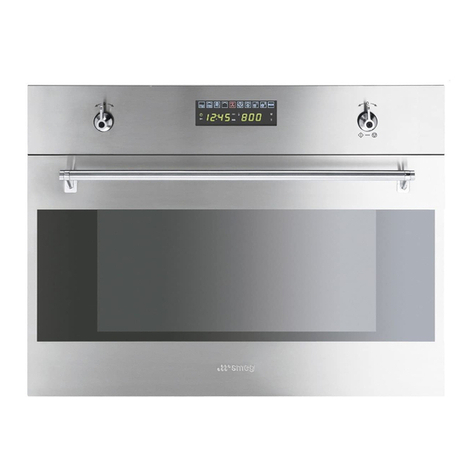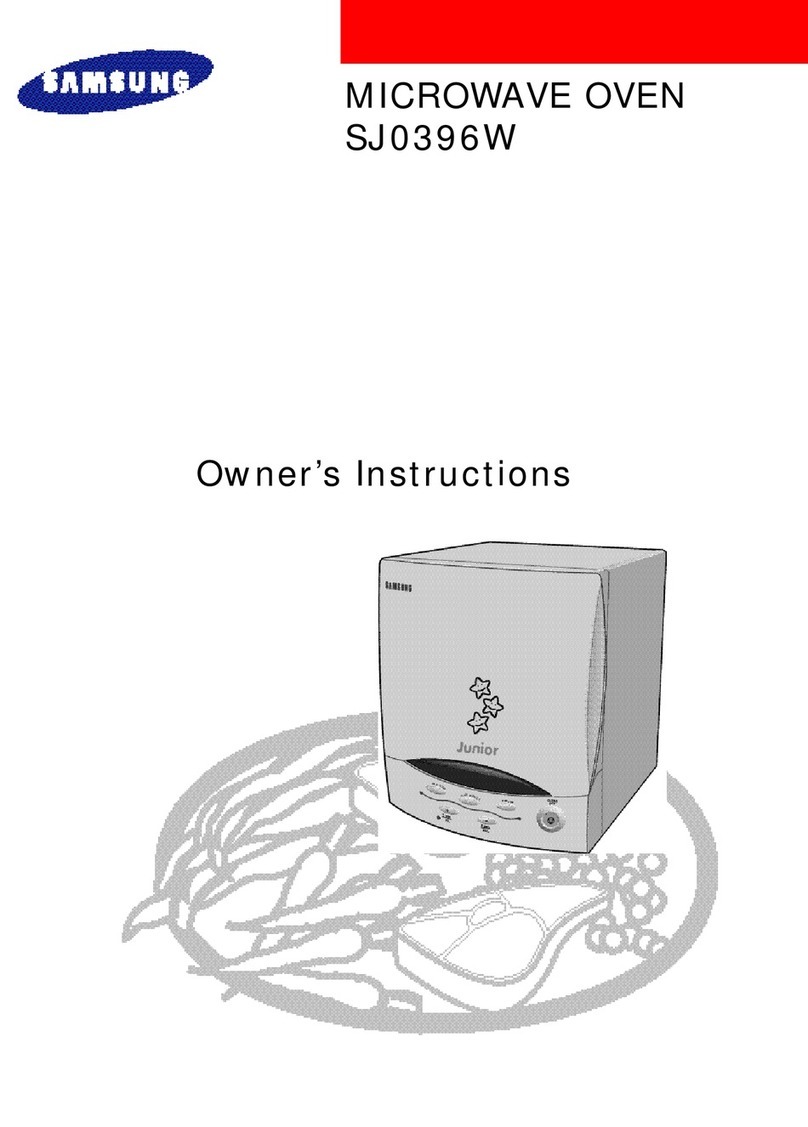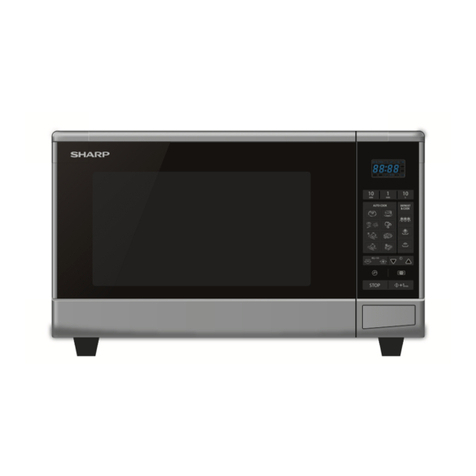
opening the door. Once the door is closed the process will be continued.
6. A bell ring will be heard after time out. And the oven is de-energized and lamp will be off.
Caution: If food is removed before time out, make sure the timer is set back to “0” position so as to
avoid unintentional running without load.
Defrost notes
Defrost the frozen food is one of utilities of microwave oven, it is safe than room temperature defrosting as
it would not help the growth of deleterious bacteria.
1、turn the function selector to defrost setting.
2、Set the timer, which is dependent upon the frozen food. It usually required longer time than ordinary
cooking. Turn the food at least one time to check the doneness. If the defrosted food can be cut by
knife defrosting period can be terminated.
Note: The thickness of microwave can penetrate through food from single side is not more than
4cm, if defrosting thick and chunky food, for obtaining the best result, turn over the food constantly.
Remove out the defrosted portion or thin parts to prevent further cooking.
Defrost guide
Steak chops
- shield thin end of chops or steaks with foil.
- position the food with thinner parts in the center in a single layer on a shallow dish. If pieces are stuck
together, try to separate as soon as possible.
- turn over the food in the middle course. Then rearrange and shield the defrosted portions.
- Close the door to continue defrosting.
- After defrost time, stand covered with aluminum foil for 5-15 minutes.
Minced Beef
- Place frozen minced beef on a shallow dish. Shield edges.
- turn over the food in the middle course. Remove defrosted portions, turn over and shield edges with
foil strips.
- Close the door to continue defrosting.
- After defrost time, stand covered with aluminum foil for 5-15 minutes.
Roast Meat (Beef/pork/lamb)
- Shield the edges with foil strips.
- Place joint with lean side face upwards (if possible) on a shallow dish.
- turn over the food in the middle course. And then shield the defrosted portions.
- Close the door to continue defrosting.
- After defrost time, stand covered with aluminum foil for 10-30 minutes.
Poultry
- Remove from original wrapper. Shield wing and leg tips with foil.
- Place breast side down on a shallow dish.
- turn over the food in the middle course. And then shield the defrosted portions.
- Close the door to continue defrosting.
- After defrost time, stand covered with aluminium foil for 15-30 minutes.
Note: After standing run under cold water to remove giblets if necessary.
Chicken pieces ( chicken wings and drumstick)
- shield the exposed bone with foil.
- Place chicken pieces on a shallow dish.
- turn over the food in the middle course. And then rearrange and shield the defrosted portions.
